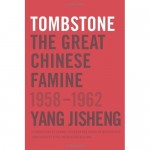In a situation of direct entitlement failure, food availability in shops may not go down very much even when total food availability sharply goes down. When during the Irish famine in late 1846, people were starving, Major Parker, the local Relief Inspector sent the following report on December 21st from Skibbereen: “On Saturday, notwithstanding all this distress, there was a market plentifully supplied with meat, bread, fish, in short everything. Similar reports from all over Ireland made Trevelyan insist that all the “resources” of the country should be, as he put it, “drawn out.” In fact, however, the apparently paradoxical situation had arisen from a decline in entitlement in excess of the supply of food. That situation is, in fact, quite a common occurrence in famines. What has to be guaranteed to prevent starvation is not food availability but food entitlement.
That’s 1998 Nobel laureate for economics Amartya Sen, in an 1980 essay in World Development titled “Famines,” which I assigned as a reading in my food policy seminar.
